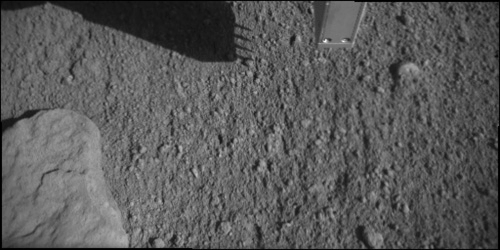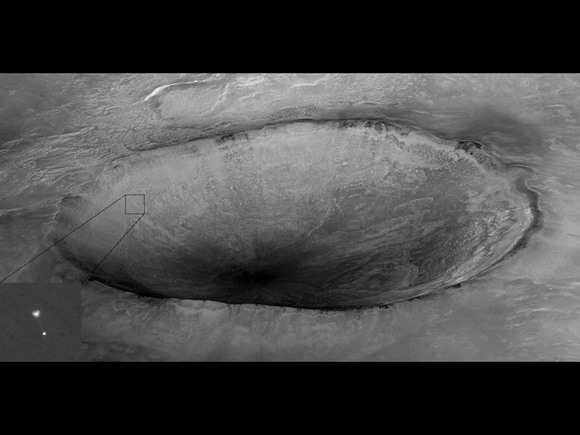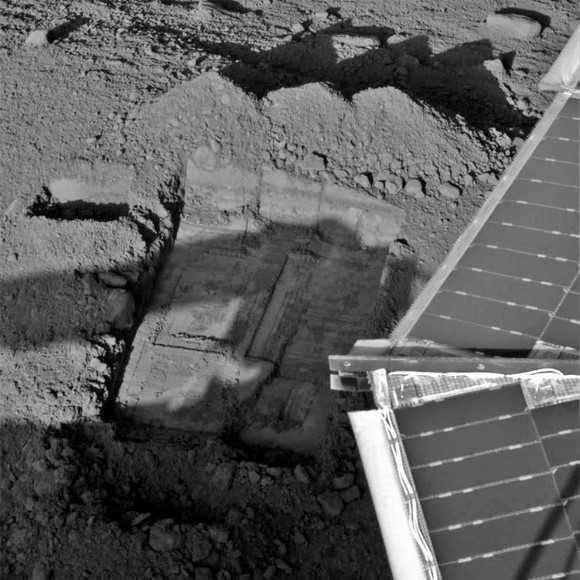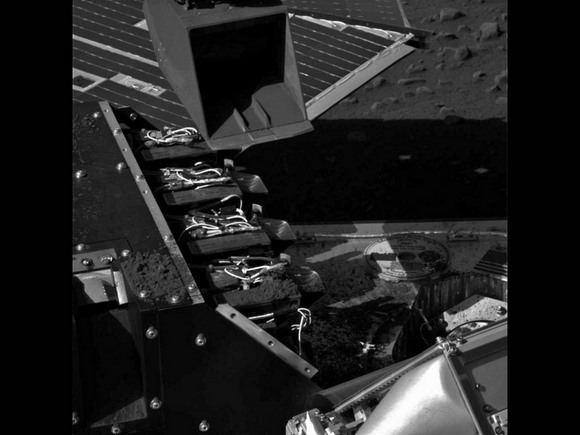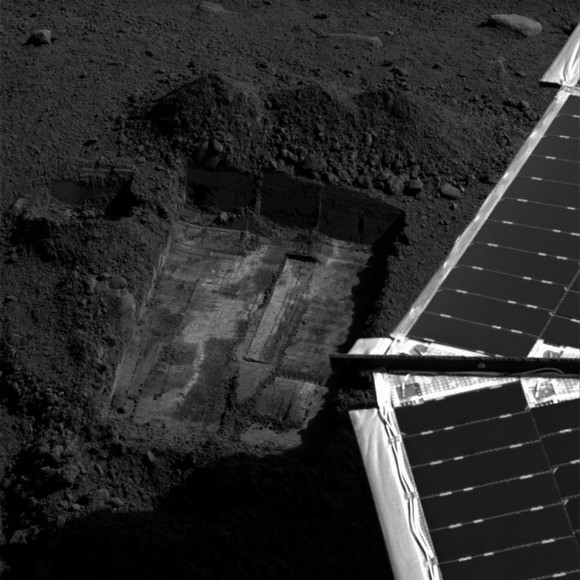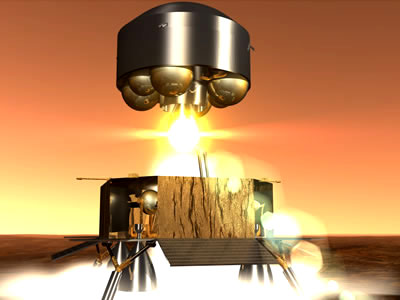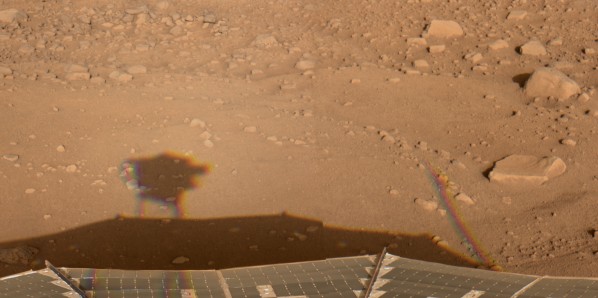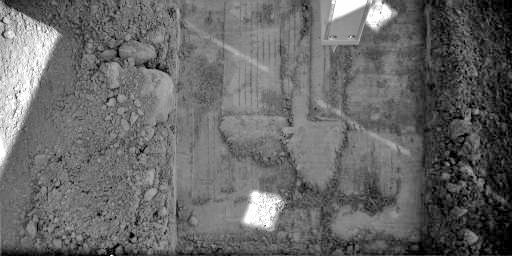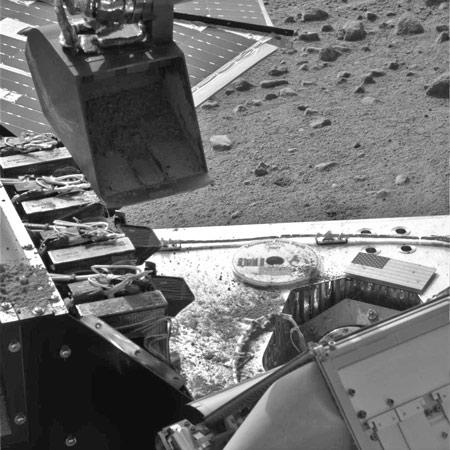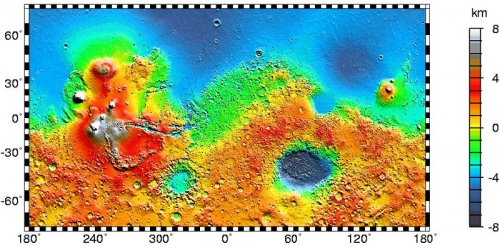It’s not that the Phoenix lander’s mission to Mars is over – not by a longshot. But Phoenix did stick a fork in it. The “fork” is a four-pronged thermal and electrical conductivity probe that Phoenix poked into the Martian soil for the first time. The probe tool can help the science team assess how easily heat and electricity move through the soil from one spike to another. These measurements can provide information about frozen or unfrozen water in the soil. The probe is mounted on the “knuckle” of Phoenix’s Robotic Arm. The probe has already been used for assessing water vapor in the atmosphere when it is held above the ground.
The image above is a series of six images, taken on July 8, 2008, during the Phoenix mission’s 43rd Martian day, or sol, since landing. The insertion visible from the shadows cast on the ground on that sol was a validation test of the procedure. The spikes on the probe are about 1.5 centimeters or half an inch long.
Phoenix also tried out another instrument: atomic force microscope. This Swiss-made microscope builds an image of the surface of a particle by sensing it with a sharp tip at the end of a spring, all micro- fabricated from a sliver of silicon. The sensor rides up and down following the contour of the surface, providing information about the target’s shape.
“The same day we first touched a target with the thermal and electrical conductivity probe, we first touched another target with a needle about threeorders of magnitude smaller — one of the tips of our atomic force microscope,”said Michael Hecht of NASA’s Jet Propulsion Laboratory, Pasadena, Calif., lead
scientist for the suite of instruments on Phoenix that includes both the conductivity probe and the microscopy station.
The atomic force microscope can provide details of soil-particle shapes as small as about 100 nanometers, less than one-hundredth the width of a human hair. This is about 20 times smaller than what can be resolved with Phoenix’s opticalmicroscope, which has provided much higher-magnification imaging than anythingseen on Mars previously.
The team for the robotic arm is still working out the best way to get samples of ice from the trench dug earlier called “Snow White,” and be able to transfer the samples quickly into the Thermal and Evolved-Gas Analyzer (TEGA) which heats samples and identifies vapors from them.
Scientists have yet to release any information about the second test from the Wet Chemistry Lab. They are still analyzing the results.
Original News Source: NASA’s Phoenix site

